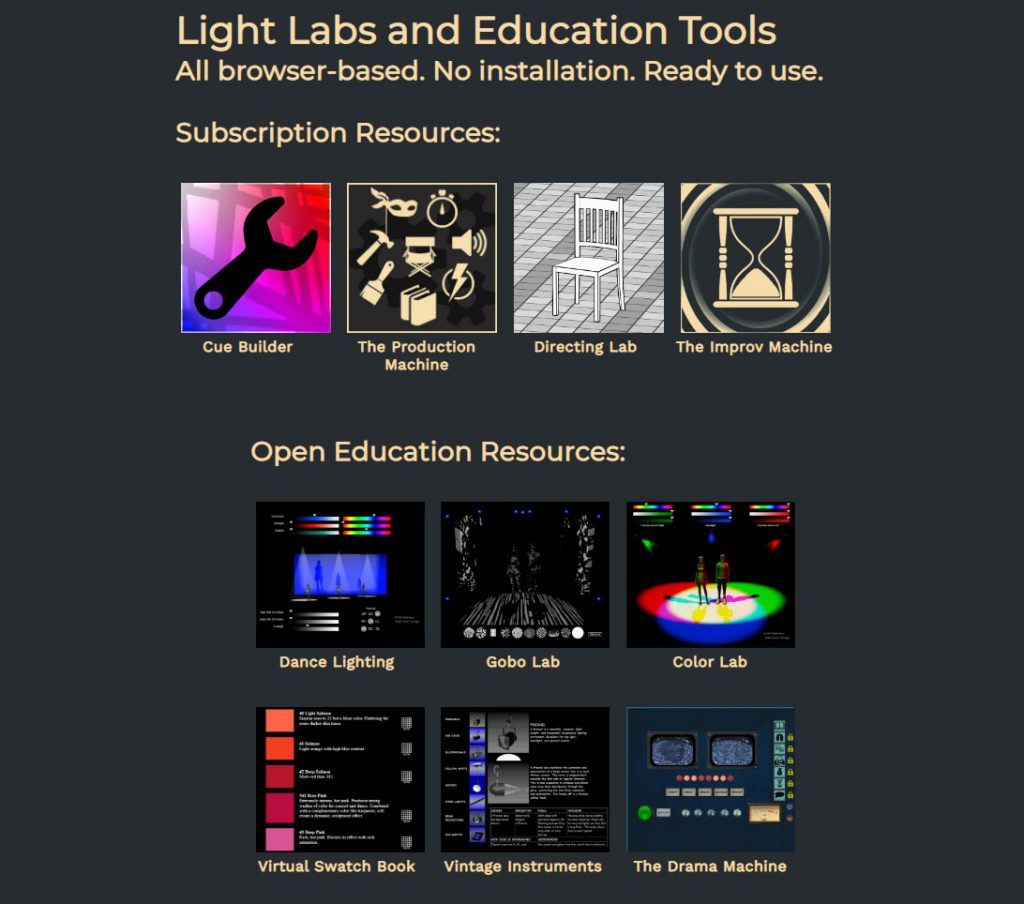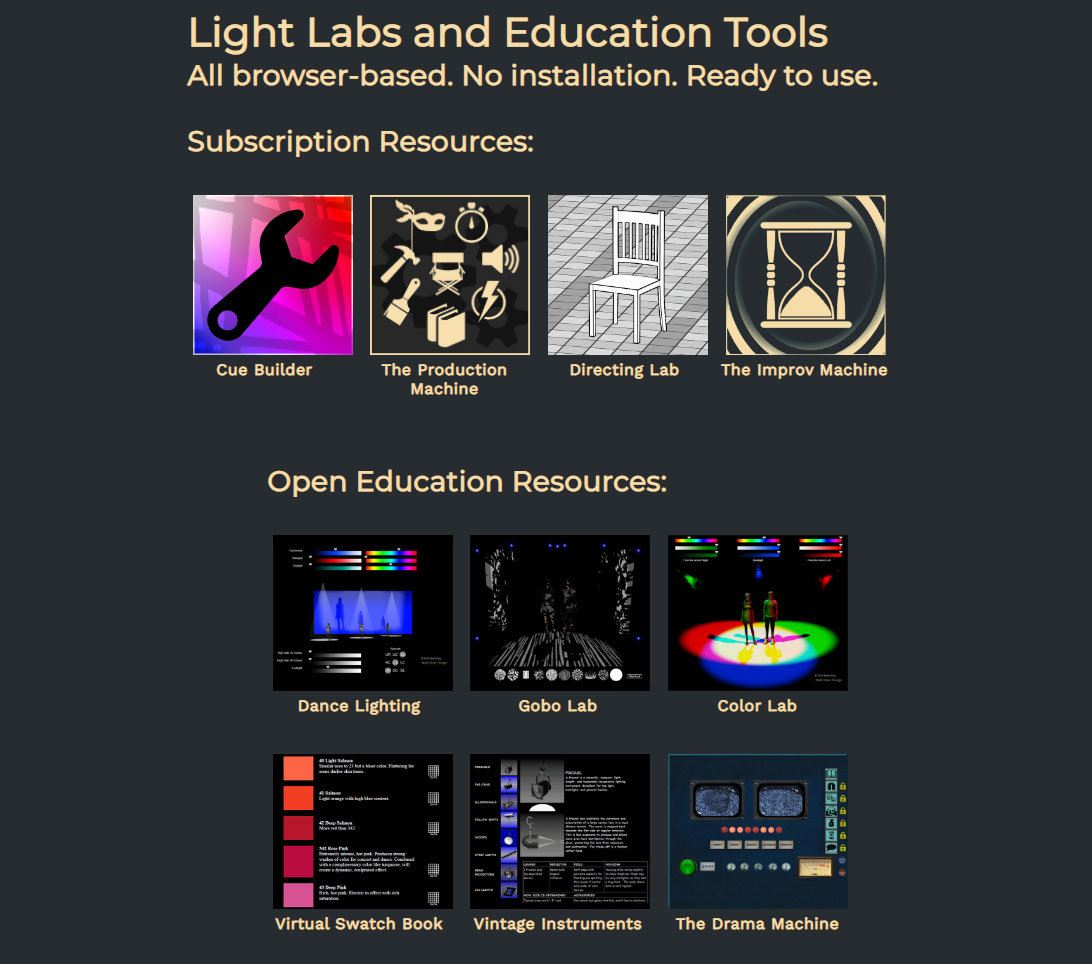The online theatre resources are available here.
About the Education Resources:
For theatre educators, facilities and space are critical to what we teach. Whether our students are actors, directors, designers, technicians, or other contributors, our work is based on skills, and our work requires access to certain types of space and tools.
During very ordinary academic years, it can be hard to provide access to the spaces and equipment that everyone needs. When circumstances restrict access even more, it gets really hard to make plans that will be useful and engaging. People learn by doing. There’s other ways to learn, but the doing part has to be in there or none of the learning takes root.
I started making virtual learning spaces for my students quite a few years ago. I ramped it up a bit in the past three years, and this year it became crucial to provide virtual lab spaces for students to learn in. This is a library of resources that includes open-education labs, as well as some subscription-based tools.

The open-education resources include a variety of light-labs and collaboration exercises. Design students can explore gobos, color, and combinations of light in different spaces. There is a virtual swatch book to support course work in lighting design. Another resource demonstrates vintage lighting instruments. A real favorite is The Drama Machine. It works great in the classroom or in video conferencing. It churns out random plots, venues, budgets, and concepts like a game show for your classes to solve with collaboration as a group.
The subscription-based resources are more involved.
Virtual Light Lab Online
Cue Builder is more than just a light-lab. It simulates the experience of building cues on a light board with a fully functioning light plot, in a dark theatre. Multiple settings are available, with control over 47 channels of light with color and gobos. Cues can be saved, loaded, and delivered to instructors.
Virtual Directing Lab Online
Directing Lab simulates an acting studio. Set props and actors can be placed freely in the space. This includes beds, pianos, bars, columns, sofas, and much more. Everything can be rotated. Actors can sit and lie down in lots of ways. Moments can be recorded in sequence with plenty of ability to insert or delete content. There are several ways students can present work or submit it to instructors. This lab can also work with live readings over Zoom. This allows directors to do voice work with actors and run scenes with the simulated blocking.
Role-Playing Collaboration Exercise
The Production Machine combines the Drama Machine with role-playing. Students are assigned character traits to adhere to, and roles to fill in fictional production meetings. It’s easy to enter a roster or list of names, and then assign roles like set designer, director, dramaturg, lighting designer, and more. Each student gets a secret code. The code shows them the personality quirks they need to stick to while arriving at a plan for the randomly generated production.
Improv Acting: Online or in the Classroom
This is the Improv Machine. The list of actors becomes a source of randomly chosen pairs. Use the built-in tools to provide scenarios, locales, genres, traits, and much more. The hourglass can be set for any amount of time. This works in the classroom as well as it does over video conferencing. The machine will rotate actors steadily through, either in pairs, or replacing one at a time.
There’s much more to be said about all of these resources. The open-education tools are available for anyone at any time. The subscription-based resources are available for various group rates structured for classes, schools, and districts.
All of them are browser-based. No installation is required. They run well on very simple devices, such as Chrome Books.
Hyflex, Online, or Hybrid theatre courses
You might be looking at hyflex, online, or hybrid theatre courses soon. These resources are built to provide virtual space and tools for your students so that they can continue to learn, while you mentor them.
Whether you are in the classroom, or not at all.
